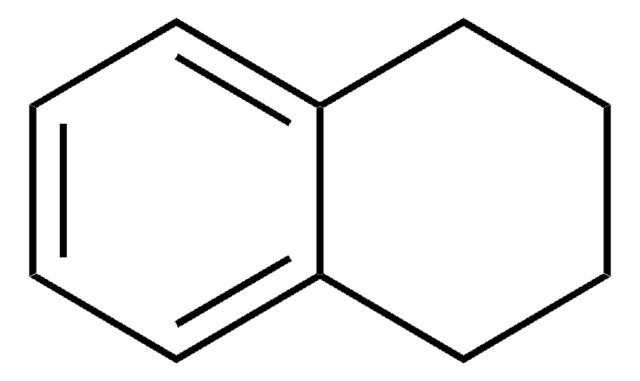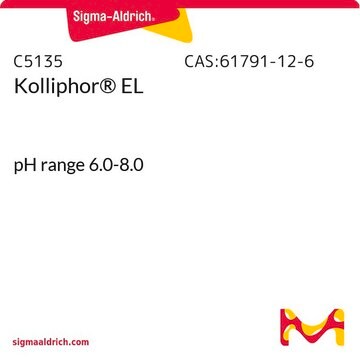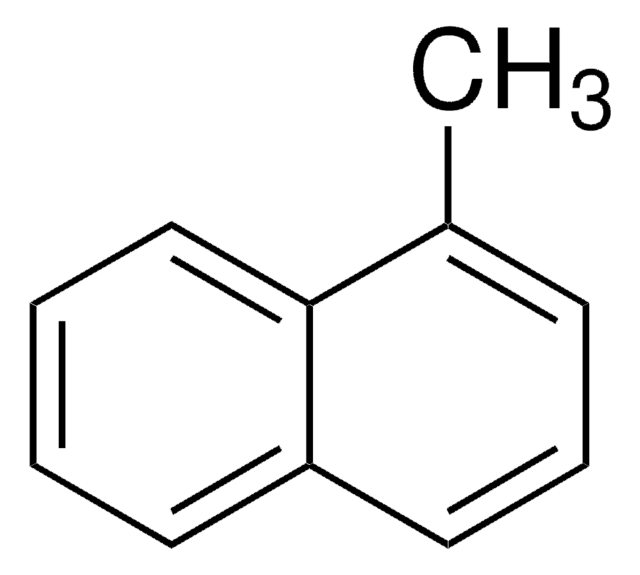Kluczowe dokumenty
429325
1,2,3,4-Tetrahydronaphthalene
ReagentPlus®, 99%
Synonim(y):
Tetralin solvent
About This Item
Polecane produkty
klasa czystości
reagent
gęstość pary
4.55 (vs air)
ciśnienie pary
0.18 mmHg ( 20 °C)
linia produktu
ReagentPlus®
Próba
99%
Formularz
liquid
temp. samozapłonu
723 °F
granice wybuchowości
0.8 %, 100 °F
5 %, 150 °F
dilution
(for general lab use)
współczynnik refrakcji
n20/D 1.541 (lit.)
bp
207 °C (lit.)
mp
−35 °C (lit.)
gęstość
0.973 g/mL at 25 °C (lit.)
ciąg SMILES
C1CCc2ccccc2C1
InChI
1S/C10H12/c1-2-6-10-8-4-3-7-9(10)5-1/h1-2,5-6H,3-4,7-8H2
Klucz InChI
CXWXQJXEFPUFDZ-UHFFFAOYSA-N
Szukasz podobnych produktów? Odwiedź Przewodnik dotyczący porównywania produktów
Opis ogólny
Zastosowanie
Inne uwagi
Informacje prawne
Hasło ostrzegawcze
Danger
Zwroty wskazujące rodzaj zagrożenia
Zwroty wskazujące środki ostrożności
Klasyfikacja zagrożeń
Aquatic Chronic 2 - Asp. Tox. 1 - Carc. 2 - Eye Irrit. 2 - Skin Irrit. 2
Zagrożenia dodatkowe
Kod klasy składowania
10 - Combustible liquids
Klasa zagrożenia wodnego (WGK)
WGK 2
Temperatura zapłonu (°F)
159.8 °F - closed cup
Temperatura zapłonu (°C)
71 °C - closed cup
Wybierz jedną z najnowszych wersji:
Masz już ten produkt?
Dokumenty związane z niedawno zakupionymi produktami zostały zamieszczone w Bibliotece dokumentów.
Klienci oglądali również te produkty
Nasz zespół naukowców ma doświadczenie we wszystkich obszarach badań, w tym w naukach przyrodniczych, materiałoznawstwie, syntezie chemicznej, chromatografii, analityce i wielu innych dziedzinach.
Skontaktuj się z zespołem ds. pomocy technicznej

















